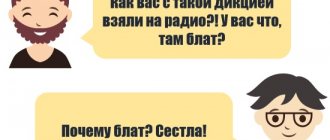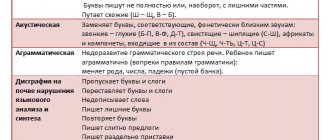Modern children, for the most part, go to school already prepared: they know how to read, write, count, and solve simple problems. Some attend school preparation courses, others work individually with a teacher, but many parents prefer to prepare their child for school on their own.
The child learned letters, learned to combine them into syllables, and syllables into words. And the parents are very happy; they have something to be proud of in front of their neighbors. Especially if the neighbors’ children only play with toys and don’t know a single letter.
But we cannot stop there. Otherwise, the acquired skills will quickly self-destruct. Now it's time to move on to reading short texts. This is a very difficult but interesting task for a child. After all, by perceiving the text, the child receives a lot of information that is useful and exciting for him.
Parents and teachers often find themselves at a loss as to how to offer texts to a preschooler, in what form it will be more effective, and how to begin to develop syllable reading at this age.
Learning letters and learning how to put them into words is not an easy task. It happens that parents give up during the learning process. Taking age into account is an important point. This is where we will begin our discussion.
This article will discuss how to make learning enjoyable for parents and their little students.
Age characteristics of preschoolers
Five-year-old children are very active and inquisitive. At this age, “growing up” happens right before our eyes. Children develop not only physically, but also mentally and intellectually.
During this period, the child begins to prepare for school. Cognitive mental processes begin to form with great acceleration. Children constantly ask adults questions.
The beginning of the formation of cognitive interests contributes to the development of imagination and fantasy. Thanks to these processes, the formation of the creative potential of the preschooler’s personality begins.
Children gain knowledge through all types of activities - games, classes, various productive and leisure activities.
I decided to invite you to work with your child (and it will be no less interesting for you) using the following method.
You choose a level, carefully read the sentence, and then compose it from scattered syllables and letters.
Depending on the level, sentences are lengthened by a certain number of words. This allows you to improve your skills in memorizing and putting words together from syllables.
To make the task more difficult, you can turn on the timer and try to compose sentences within the allotted period of time. The timer can be stopped at any time.
If the sentence is still too complex for the child, you can skip it by clicking on the “Next” button.
After the proposal has been completed, click on the “Check” button. The result will speak for itself.
Have fun practicing your reading and memorization skills!
Full screen
When can you start teaching your child to read?
Reading should be taught only when speech therapy problems, if any, have been resolved. Speech disorders can lead to dyslexia (impaired reading process), and in the future to dysgraphia (impaired writing process). The consequence of all this will be low performance at school.
If a child does not pronounce a couple of “uncontrollable” sounds, but in general his speech is clear, this is not so critical. If the baby has porridge in his mouth and cannot pronounce half of the letters, then first of all it is necessary to correct his oral speech with the help of a speech therapist. When learning the alphabet, the baby will learn the letters the way he hears and pronounces them himself, and this will lead to problems in reading and writing.
Age is also important. There are methods that allow you to teach very young children, but you need to understand: is the child really ready to learn, does he understand the explanations, does he like the lessons. Here it is very important to grasp the fine line between the child’s psychological readiness for learning and the ambitions of his parents.
If there are no speech therapy problems or they have already been resolved, if the baby is ready to learn, then it is worth introducing him to the alphabet, and then moving on to reading syllables.
What do you need for games?
So we will play:
- with warehouses (not to be confused with syllables)
The concept of a warehouse was introduced by Nikolai Zaitsev (creator of the well-known Zaitsev cubes). Unlike a syllable, which can consist of either 4 or 5 letters, a warehouse is considered a minimally pronounceable unit. The warehouse can be:
- fusion of consonant and vowel (YES, MI, BE...);
- a separate vowel as a syllable ( YA
-MA; KA-
YU
-TA); - a separate consonant in a closed syllable (KO- SH
-KA; MA-YA-
K
); - consonant with a soft or hard sign (Мь, Дъ, Сь...).
In the game you can use both Zaitsev's cubes and cards with warehouses written on them. I’m not going to try to persuade you to buy expensive Zaitsev cubes now. Yes, this is an interesting and useful manual, but if you do not have the opportunity to purchase them, do not worry, you can make a huge number of manuals at home with only cardboard and markers.
- with words written according to the warehouse principle.
You can either write words by hand with a felt-tip pen or print them on a printer. So that the child sees not only the whole word, but also learns to analyze its composition, we will highlight warehouses in it. It is not advisable to separate warehouses using additional signs (separate them with dashes, circle them); it is best to highlight them in different colors. You don’t need to use all the colors of the rainbow; take two colors that are similar in shade, for example, blue and cyan or dark green and light green. You will also need black. We write the first warehouse in one color, the second in another, the next one in the first color again, etc. But! The shock warehouse is always highlighted in black, as it is heard “brighter”.
What words should I write on the cards?
The main essence of this approach to teaching reading is to show the child that letters and words are not meaningless squiggles, they represent very specific objects, and you can play with them just like with familiar toys.
Positive experience
Emotionally developed, full of impressions, preschoolers quickly gain positive learning experiences. Additional incentive in the form of praise and support helps children self-motivate for educational activities.
Thanks to the rapid development of memory, attention, and mental operations, five to seven-year-old preschoolers are already able to receive and process a large flow of information. But this should not be abused. Still, this is a child’s brain, and the dose of information should be calculated specifically for the child’s age stage and the corresponding cognitive experience of the child.
We read syllables using the Zaitsev method
One of the interesting ways to teach a child to read syllables by playing is the method of Nikolai Zaitsev. It is based on the use of special developmental material and warehouses. The child learns to read through games, songs and sing-alongs.
A warehouse is a consonant-vowel pair that differs in color. They can be found in the form of cards, but it is better to use cubes with warehouses developed by the scientist. The 52 cubes included in the set vary in size, weight, filling and color according to the syllables applied to it. This helps children learn to read from scratch using all their senses.
Preschooler's speech
The most important acquisition in preschool age is considered to be correctly formed speech and sufficient vocabulary.
Preschoolers already know many poems, riddles and fairy tales by heart.
But in order for a child’s personality to develop, it is necessary to diversify the information and complicate the learning material. This will spur the baby’s curiosity and develop in him a desire to learn even more new and unknown things.
It is important to remember that teaching preschoolers should take place in a playful, unobtrusive form. Otherwise, the child will quickly lose interest in what is happening, and in the future, reading will only cause hostility.
Classes must be held regularly, and the material covered must be reinforced every day. To do this, it is not necessary to constantly sit with a primer and do exercises. You can look for familiar letters or words on signs, product packaging, or magazine titles at the newsstand.
It is necessary to become interested in reading from an early age. The good old tradition of reading fairy tales before bed will help perfectly with this. A personal example is also important: it will be useful for a child to see his parents not only in front of a TV or laptop screen, but also with a book in their hands.
Algorithm for teaching reading
Alphabet
First you need to introduce your baby to the alphabet. To do this, we have developed a simulator, the work of which can be found here.
Full screen
Learning should start with hard vowels: A, O, U, E, I, Y. Then move on to hard voiced unpaired consonants: L, M, N, R. At the end, move on to complex vowels: E, E, Yu, I and consonants that are difficult for a preschooler to perceive - hissing, deaf, hard voiced paired (B, V, G , D).
When naming consonants, you cannot designate them as “em”, “el” or “me”, “le”. You need to pronounce the sound itself. For example, “This letter sounds like this: “m.” Otherwise, the child may not learn to put letters into syllables and when reading there is a risk of getting something similar to “me-a-me-a” instead of “ma-ma.”
Syllables
The next step is to connect the letters into syllables. Methods of teaching this will be discussed in detail below.
Words
The ultimate goal of learning is to add syllables into words and develop continuous reading skills.
Basic principles of games
There is one very sure way to discourage a child from reading - this is to constantly test him: “Tell me, what letter is this?”, “Read what is written here!” Having shown a letter to a child a couple of times, we expect that by the third time he will already name it, or even better, read the word with its participation. If you want to really interest your child in reading, then put off at least for a while trying to examine your child and just read with him!
It is natural that a child just beginning to become familiar with the world of letters cannot read a word. Therefore, when showing words to your child, do not require him to read, but at first read for him yourself!
You can also trace the letters with your baby’s finger. After some time, the child will definitely begin to recognize words and phrases and will repeat them after you.
Sometimes a word needs to be read slowly, highlighting each word in it, sometimes it is necessary to name the entire word so that the baby learns to perceive the words as a single whole.
While reading, you can name individual letters (for example, if you don’t like the warehouse approach), but in this case it is advisable to pronounce not the name of the letter (“el”, “ka”), but the sound that corresponds to this letter (“l”, "To").
How to work with texts
You can start working with texts with small poems and very small stories.
A preschooler cannot always grasp the meaning of the text. Therefore, the learning process should be structured approximately as follows:
Choose small cards with short sentences. For four-year-olds, the text on the card should contain no more than 1-3 sentences.
Older preschoolers should be offered cards containing 4-5 sentences.
The sentences selected are not long. There should be few words in a sentence. And they shouldn't be too long. To begin with, it is better to place the sentences themselves on the card as simple ones or with one comma.
Such texts are easily perceived by preschoolers. But you can’t stay at this level of complexity for long.
It is necessary to move on to text reading using cards only when syllabic reading has been mastered at a good level and brought to automatism. At this point, you can move on to texts with unfamiliar information.
It's not just children who should read. It is better to do this one by one or in a chain if this activity takes place in a kindergarten group.
You can't rush the baby. And even worse - start giving him hints. This will only lead to the fact that the preschooler will always stop at difficult places in the text, waiting for a hint.
Not reading speed, but understanding the meaning of the information provided in the text is more important at the learning stage.
Where can I get cards with texts for preschoolers?
You can make cards yourself or find age-appropriate ones on the Internet. If we make cards ourselves, then we can make sentences in such a way that they tell about the child himself.
Even write down his name. This will definitely interest the young reader, and he will want to know what is written about him.
The text in sentences should be made large and bold. This will facilitate visual perception of information. At the first stages, a hyphen is placed between the syllables, which will also make reading easier, because the baby is already familiar with the syllables.
Vitaly Korzhikov. "Master Juanito"
(from the collection “Sea Chest”)
During one of his round-the-world voyages, in Cuba, Vitaly Korzhikov met a local boy named Juanito. Juanito is the favorite of the sailors of the Russian ship, and he pays our sailors with sincere affection. In the evenings, after the watch, the sailors played football in a vacant lot near the pier. Juanito was the most devoted fan and eagerly ran to serve the players a ball that had flown far away.
One day he asked the team captain, artel worker Stepan, to take him to the game, to which he heard: “I also found a master of sports! Grow up!” But one day the ball fell into the water and, caught by the current, floated straight into the ocean. There was no spare ball, and the sailors raced to the pier. But Juanito was ahead of everyone, who rushed after the ball in his fragile, leaky boat. There were no oars on it, Juanito rowed straight with his hands, and the shark was spinning around the boat. At the climax of the story, during the deadly fight between the boy and the shark, the reader’s heart skips a beat. But dexterity, desperate passion and a great desire to repay Russian friends with good for their friendship win. The ball is saved, and Juanito receives a badge from the grateful sailors - a small bronze football player.
“Juanito looked at him. Then he turned to the amused Stepan, pointed his finger at his chest and suddenly, winking at him, asked:
- Am I the master? A? Master?
Everyone laughed. And Juanito jumped into the boat and swam to the cove.”
There are no barriers to true friendship, says Vitaly Korzhikov. There is no language barrier - Juanito does not know Russian, our sailors do not speak Spanish, but everyone understands each other, because good deeds speak eloquently about human intentions. People of different nationalities will always find a common language - the language of friendship, trust and love.
5.
Texts for reading using cards with pictures
Next, I have selected a small collection of cards that can be printed for activities with preschoolers.
The cards are illustrated, the sentences are selected according to the age of the child in the preschool period.
How to develop speed reading skills?
Cards with reading texts for children from 4 years old
These cards contain a colorful illustration with one sentence based on the picture presented. It will be easy for a child to read the text by looking at the image.
Printed pictures can be folded to make small books that the child will re-read from time to time.
Cards with reading texts for children from 5 years old
The cards below contain more text. After reading them, it will be useful to give your child a simple task.
Reading text card 1
Reading text card 2
Reading text card 3
Card for learning to read
Reading text card 4
Reading Card 2
Related posts:
- Teaching a child to read Teaching reading in preparation for school. When can you teach a child...
- Reading culture - conditions for formation Conditions for the formation of reading culture among schoolchildren in the process of extracurricular activities. Technology…
- D. Davis and his method of speech correction for dyslexics The Davis method for dyslexia has been successfully used to correct speech disorders….
- What is "War and Peace" about? Summary of the novel “War and Peace” by chapters. All answers...
Tasks
Coloring books, puzzles, puzzles, and creative workshops increase a preschooler’s interest in the learning process and help create an atmosphere of friendship and understanding. Reading assignments have one important feature - they are multifunctional. Kids not only learn to read, but also develop motor skills, imagination, fantasy, thinking, and speech. It is simply impossible to do without interesting ideas for exercises and games for teaching reading to preschool children.
Find the letters and color them
Choose themed coloring pages. They may contain additional tasks, for example, color only those objects that begin with the letter “B”, color small images of letters, do not touch capital letters, etc.
Find the letters in the picture
Look at the picture and read
This task is suitable for children learning letters and reading syllables. Pictures with familiar objects can be shown in large quantities. Kids remember words well and use associations when reading without images.
After studying the words and relating them to objects, invite your preschooler to read the words without pictures. Familiar syllables form faster.
Reading syllable by syllable
For children who have mastered syllables well, short fairy tale texts are suitable. They can be read with parents or one at a time in class. After reading, be sure to ask your child what he understood and whether he can retell the text.
It is very important not to take boring, serious works for the lesson. It will be interesting for your child to learn the entire story of the characters from beginning to end in 3-4 sentences. In the process of reading such fairy tales, the teacher develops an interest in books in young students and a love for independent study of literature.







